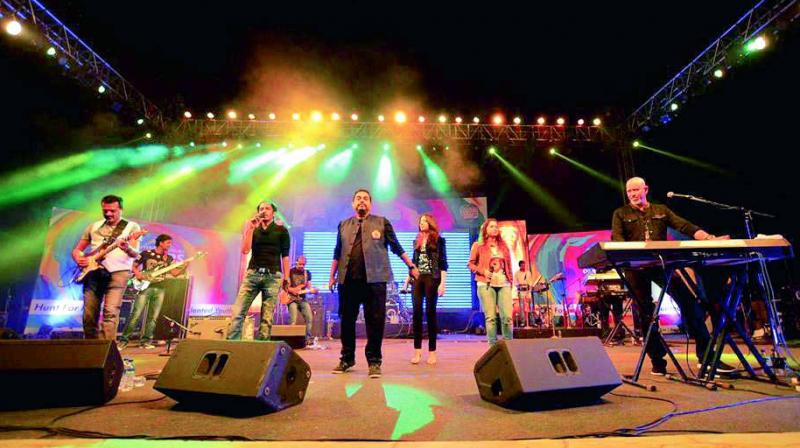SEL' struck by brilliance

When diverse soundscapes of Bollywood brings together different genres of music such as jazz, blues, rock, electronic, Hindustani classical and Carnatic, and still manages to resonate well, it can be attributed to the film industry’s musical trio Shankar Mahadevan, Ehsaan Noorani and Loy Mendonsa. Champions in their respective genres, they have been creating music over 22 years now, and have several hits to their credit. Recently, the three with their band SEL troika, performed during the Hockey World Cup Finale where they belted out their earlier hits such as Jhoom Barabar, Where’s the party tonight and Galla Goodiyaan followed by Sharkar’s famous numbers Koi jo mila to and Sabse aage honge Hindustani. In 2019, the musicians would be making music for upcoming films like The Zoya Factor, Ek Ladki Ko Dekha to Aisa Laga and Yash Raj’s Prithvi Raj Kapoor.
The three came together in 1996 and still claim to be having a lot of fun making music together. Their strong camaraderie has often set a benchmark in the showbiz arena where ego has led to the disintegration of several bands and groups. But for SEL, their relationship is like marriage and giving enough space to everyone is the key. “The only way you can maintain your camaraderie is when you respect each other, it’s almost like a marriage and you have to work on your relationship every time,” says Shankar. But how do you solve differences? “We fight every day, and we make sure we fight all the time,” quips Ehsaan. Interrupting him Shankar says, “We have a boxing class just under the chair every day. We are not doing synchronised swimming here as we are three individuals so we also fight.” Laughing over their responses, Loy adds, “They have boxing gloves and I have the baseball bat, so I always win.”
Despite their meteoric success that brought fame and money, the trio claims that they never run after material successes. “We don’t run after success and that’s the key for us. We believe in producing quality work and focus on that part more,” believes Ehsaan. Similarly, Shankar believes if the music has depth, then it will stand the test of time, “If your music has depth and aesthetics, then it will be respected by everyone, even if it is for an item song.” SEL’s recent songs from the film Raazi Ae Vatan and Dilbaro have managed to stir the emotions in the audience. Speaking about that, Shankar says, “We have been creating music as an experiment and for this we only focused on good melody, if that is good then dressing can be done over it later,” explains Shankar.
When asked how they have been consistent with their music in the industry and be relevant with changing demographics, Ehsaan says, “We have seen a lot of trends coming and going, but the thing is whatever we do, we do it in the best possible way and that has made us sustain.” However, Shankar draws attention towards the trend of bringing multiple composers together to compose one song. “I feel sad about it because nobody knows which composer has composed which song and who should be credited if the song becomes popular,” says the musician. “The credit, success and recognition should go to the one (individual) to whom it is due,” adds Loy.
While everyone in the music industry has observed the trend of fusion of western and Indian music genres, the trio explains that fusion music isn’t new by stating an example of Waqt Ne Kiya Kya Haseen Sitam from the film Kaagaz Ke Phool in 1959 that was sung by Hemant Kumar. According to Shankar, the song has
Opera chorus in the background and that is fusion. “It’s just now people are becoming aware of fusion but that has always been there,” concludes the musician.

